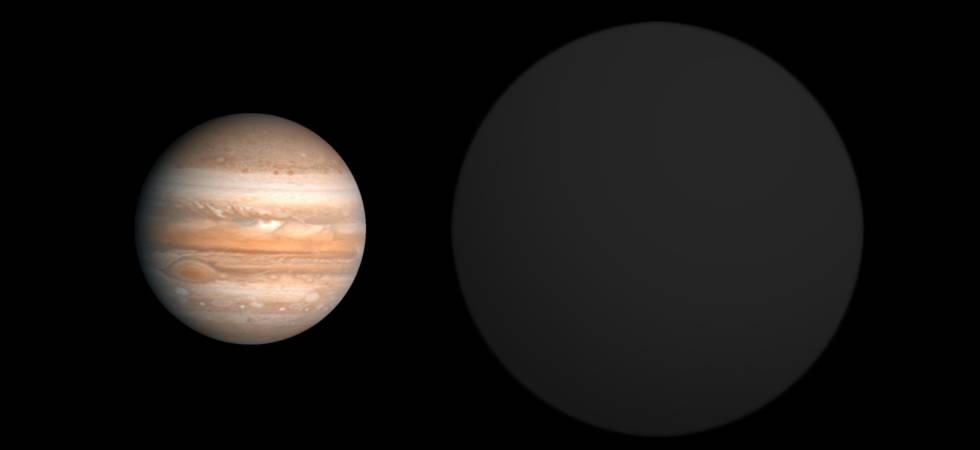
WASP-104b, the darkest planet detected with absorption of more than 99% of light
A team of researchers has made a fascinating discovery about a planet’s ability to absorb 99% of the light that reflects on it. The planet is the question is equivalent to the size of Jupiter located around 466 million light-years away from our planet. Its distinct feature is its blackness where it blocks 99% of the light incident on it from its host star making it extremely difficult to spot. To put things into perspective, it is assumed to be black as dying embers or plums or blacker than the charcoal.
The new paper which is yet to be reviewed by the official journal has been released on journal arXiv which is an online portal for research papers before they are published in recognized journals. According to the paper, WASP-104b – one of the blackest planet in the universe ever detected, is a massive gassy planet the size of Jupiter with soaring temperature which has earned it the place in hot Jupiters. It can swallow anywhere between 97% to 99% of light from its host star which makes it outstandingly difficult to spot.
Teo Mocnik, the author and a researcher at the Keele University in Staffordshire classified it as one of the five darkest planets in the universe where he has placed WASP-104b at the third position. Note that the darkest planet ever detected is TrES 2B which is also known as Kepler-1b which is a pitch-black exoplanet situated over 750 light-years away from the Earth which swallows more than 99% of the light incident on it from its host star making it one of the closest to the perfect black body.
WASP-104b was first discovered in 2014, however, the team including Mocnik were the one to study the data obtained by the Kepler Space Telescope and to derive at a conclusion about the blackness of the planet which is impressive. Assuming that it is nearly a perfect blackbody, researchers had to study the planet under transit method which is called as transit spectroscopy. In this method, the telescope looks after a star for signs of any exoplanets orbiting around it. It detects the brightest of the planet to an extreme precision and catches even the minutest dimming of light which is a sign of a planet passing through the star.
With transit method, Kepler Space Telescope has discovered more than 4,000 exoplanets and more will be discovered soon with the new TESS space telescope which has an estimated 200,000 exoplanets to scan in the universe. Coming back to WASP-104b, the telescope also captures any wobbling in the gravitational paradigm of the host star which could help researchers ascertain the data obtained and derive at a conclusion.
In this case, researchers stumbled upon the black WASP-104b which is a hot Jupiter and it is tidally locked with its host star located just 2.6 million miles away. It takes the planet only 1.76 earth days to complete a full orbital rotation once. Researchers believe that counterintuitively, the planet is tidally locked with the host star-making one of the sides face the star producing a soaring hot surface temperature and extreme stellar radiation while another side is in the nighttime with subtle temperatures and endless night.
As per the researchers, the region facing the host star would have scorching hot temperature along with stellar radiation opposing the formation of ice or clouds. With no clouds or ice, the factor which blankets the surface into white color making it reflective towards the light and also contain elements that absorb light. Both this feature allows a planet to be visible. The planet is said to have a hazy and thick atmosphere with rich atomic potassium and sodium which can absorb many colors in the electromagnetic spectrum potentially in the visual wavelength thus making it difficult to spot.
The researchers have found out that WASP-104b can absorb anywhere between 97% to 99% of the light that hits it making it blacker than coal. However, there could be a dark purple colored solar radiation that causes it to glow but it isn’t perceivable to us sitting more than 466 million light-years away from it.


